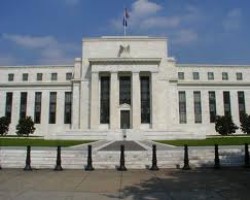
Summary
In September 2008, the Board of Governors of the Federal Reserve System (Federal Reserve Board) approved emergency lending to American International Group, Inc. (AIG)–the first in a series of actions that, together with the Department of the Treasury, authorized $182.3 billion in federal aid to assist the company. Federal Reserve System officials said that their goal was to avert a disorderly failure of AIG, which they believed would have posed systemic risk to the financial system. But these actions were controversial, raising questions about government intervention in the private marketplace. This report discusses (1) key decisions to provide aid to AIG; (2) decisions involving the Maiden Lane III (ML III) special purpose vehicle (SPV), which was a central part of providing assistance to the company; (3) the extent to which actions were consistent with relevant law or policy; and (4) lessons learned from the AIG assistance. To address these issues, GAO focused on the initial assistance to AIG and subsequent creation of ML III. GAO examined a large volume of AIG-related documents, primarily from the Federal Reserve System–the Federal Reserve Board and the Federal Reserve Bank of New York (FRBNY)–and conducted a wide range of interviews, including with Federal Reserve System staff, FRBNY advisors, former and current AIG executives, AIG business counterparties, credit rating agencies, potential private financiers, academics, finance experts, state insurance officials, and Securities and Exchange Commission (SEC) officials. Although GAO makes no new recommendations in this report, it reiterates previous recommendations aimed at improving the Federal Reserve System’s documentation standards and conflict-of-interest policies.
While warning signs of the company’s difficulties had begun to appear a year before the Federal Reserve System provided assistance, Federal Reserve System officials said they became acutely aware of AIG’s deteriorating condition in September 2008. The Federal Reserve System received information through its financial markets monitoring and ultimately intervened as the possibility of bankruptcy became imminent. Efforts by AIG and the Federal Reserve System to secure private financing failed after the extent of AIG’s liquidity needs became clearer. Both the Federal Reserve System and AIG considered bankruptcy issues, although no bankruptcy filing was made. Due to AIG’s deteriorating condition in September 2008, the Federal Reserve System said it had little opportunity to consider alternatives before its initial assistance. As AIG’s troubles persisted, the company and the Federal Reserve System considered a range of options, including guarantees, accelerated asset sales, and nationalization. According to Federal Reserve System officials, AIG’s credit ratings were a critical consideration in the assistance, as downgrades would have further strained AIG’s liquidity position. After the initial federal assistance, ML III became a key part of the Federal Reserve System’s continuing efforts to stabilize AIG. With ML III, FRBNY loaned funds to an SPV established to buy collateralized debt obligations (CDO) from AIG counterparties that had purchased credit default swaps from AIG to protect the value of those assets. In exchange, the counterparties agreed to terminate the credit default swaps, which were a significant source of AIG’s liquidity problems. As the value of the CDO assets, or the condition of AIG itself, declined, AIG was required to provide additional collateral to its counterparties. In designing ML III, FRBNY said that it chose the only option available given constraints at the time, deciding against plans that could have reduced the size of its lending or increased the loan’s security. Although the Federal Reserve Board approved ML III with an expectation that concessions would be negotiated with AIG’s counterparties, FRBNY made varying attempts to obtain these discounts. FRBNY officials said that they had little bargaining power in seeking concessions and would have faced difficulty in getting all counterparties to agree to a discount. While FRBNY took actions to treat the counterparties alike, the perceived value of ML III participation likely varied by the size of a counterparty’s exposure to AIG or its method of managing risk. While the Federal Reserve Board exercised broad emergency lending authority to assist AIG, it was not required to, nor did it, fully document its interpretation of its authority or the basis of its decisions. For federal securities filings AIG was required to make, FRBNY influenced the company’s filings about federal aid but did not direct AIG on what information to disclose. In providing aid to AIG, FRBNY implemented conflict-of-interest procedures, and granted a number of waivers, many of which were conditioned on the separation of employees and information. A series of complex relationships grew out of the government’s intervention, involving FRBNY advisors, AIG counterparties, and others, which could expose FRBNY to greater risk that it would not fully identify and appropriately manage conflict issues and relationships.
[ipaper docId=71149053 access_key=key-l15eo6l9mnzfzcml7hq height=600 width=600 /]


